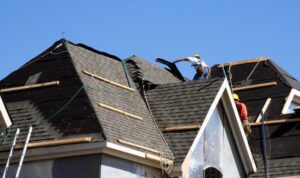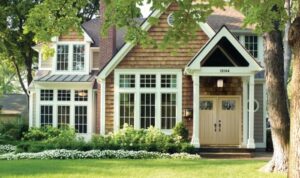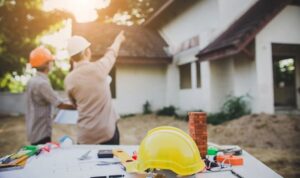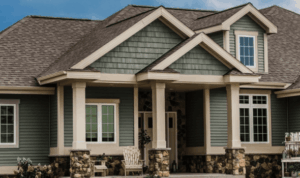Delve into the intricate world of home demolition and rebuilding costs with this informative guide. From the factors influencing expenses to cost-saving strategies, this topic offers a wealth of insights for homeowners and aspiring renovators alike.
Factors Affecting Home Demolition and Rebuilding Cost
When it comes to demolishing and rebuilding a home, several key factors can significantly impact the overall cost. These factors include the location of the property, the size of the structure, the materials used, labor costs, and the condition of the existing building.
It's important for homeowners to consider all these aspects to accurately budget for their home renovation project.
Location of the Property
The location of the property plays a crucial role in determining the cost of home demolition and rebuilding. Urban areas or neighborhoods with higher property values and stricter building codes may result in higher demolition and construction costs compared to rural areas.
Factors such as accessibility, permits, and disposal fees can also vary depending on the location.
Size of the Property
The size of the property and the existing structure will directly impact the overall cost of demolition and rebuilding. Larger homes or properties with multiple levels will require more materials and labor, increasing the expenses. Additionally, the complexity of the design and layout can also influence the cost of reconstruction.
Materials Used
The choice of materials used in the demolition and rebuilding process can affect the cost significantly. High-quality materials will come at a higher price, but they can also ensure durability and longevity. On the other hand, opting for cheaper materials may reduce initial costs but could result in higher maintenance expenses in the long run.
Labor Costs
Labor costs are a major component of home demolition and rebuilding expenses. Skilled laborers, contractors, and project managers all contribute to the overall cost. The availability of labor in the area, as well as the complexity of the project, can impact labor costs.
Condition of the Existing Structure
The condition of the existing structure can also influence the cost of demolition and rebuilding. A building with structural issues, water damage, or mold infestations may require additional work and resources to address these problems before reconstruction can begin. This can lead to unexpected costs that homeowners should be prepared for.
Additional Costs
In addition to the main factors mentioned above, homeowners should also consider other potential costs that may arise during the demolition and rebuilding process. These can include permit fees, utility disconnections and reconnections, landscaping costs, temporary housing expenses, and unexpected repairs or upgrades discovered during the renovation.
Cost Estimation Methods for Home Demolition and Rebuilding
When it comes to estimating the total cost of demolishing and rebuilding a home, there are various approaches that contractors use. Understanding how these costs are calculated can help homeowners budget effectively for their project and avoid any unexpected expenses.
Factors that Influence Cost Estimation
- Contractors typically calculate costs based on the square footage of the home. The larger the home, the more materials and labor will be required, resulting in a higher cost.
- Permits are another important factor in cost estimation. Depending on the location and the extent of the demolition and rebuilding, permits can add a significant amount to the total cost.
- Disposal fees for removing debris and waste materials from the site also need to be factored into the overall cost. The volume of materials being disposed of will impact these fees.
Importance of Obtaining Multiple Quotes
- It is crucial for homeowners to obtain multiple quotes from different contractors to ensure they are getting a fair price. Comparing quotes can help identify any discrepancies in pricing.
- By obtaining multiple quotes, homeowners can also gauge the professionalism and reputation of the contractors bidding on the project, helping them make an informed decision.
Tips for Budgeting and Planning
- Set aside a contingency fund for unforeseen expenses that may arise during the demolition and rebuilding process. It is common for unexpected issues to come up, so having a buffer can help prevent financial strain.
- Work closely with your chosen contractor to create a detailed budget and timeline for the project. Clear communication and transparency are key to ensuring the project stays within budget.
Cost-Saving Strategies for Home Demolition and Rebuilding
When it comes to home demolition and rebuilding, there are several ways to cut costs without compromising the quality of the project. By implementing cost-saving strategies, homeowners can stay within budget while still achieving their desired results.
Salvaging Materials
- One effective way to save on costs during home demolition and rebuilding is by salvaging materials from the existing structure. Items such as doors, windows, fixtures, and even wood flooring can be carefully removed and reused in the new construction.
- By salvaging materials, homeowners can reduce the need to purchase new items, ultimately saving money on material costs.
DIY Tasks
- Another cost-saving strategy is to take on certain tasks as do-it-yourself (DIY) projects. For example, homeowners can handle demolition of non-load-bearing walls or removal of fixtures to save on labor costs.
- While not all tasks should be DIY, focusing on smaller, manageable projects can help reduce overall expenses.
Negotiating with Contractors
- It's important for homeowners to negotiate with contractors to get the best possible pricing for the demolition and rebuilding process. By obtaining multiple quotes and comparing offers, homeowners can potentially save on labor and service costs.
- Contractors may be willing to work within a specified budget or offer discounts for certain aspects of the project, so it's crucial to have open communication and discuss cost-saving opportunities.
Eco-Friendly Practices
- Implementing eco-friendly practices during home demolition and rebuilding can not only benefit the environment but also save costs in the long run. For example, using energy-efficient appliances, sustainable building materials, and renewable energy sources can lead to reduced utility bills over time.
- By investing in eco-friendly solutions, homeowners can lower maintenance and operating costs while creating a more sustainable living space.
Prioritizing Expenses
- When planning a home demolition and rebuilding project, it's essential to prioritize expenses based on what is most important to the homeowner. By focusing on key areas such as structural integrity, safety, and functionality, homeowners can allocate funds where they will have the greatest impact.
- By making informed decisions and prioritizing expenses, homeowners can ensure that their project stays within budget while still meeting their needs and expectations.
Financing Options for Home Demolition and Rebuilding
When it comes to covering the costs of home demolition and rebuilding, homeowners have several financing options to consider. Each option comes with its own set of pros and cons, so it's essential to understand the differences before making a decision.
Traditional Loans
- Traditional loans, such as personal loans or construction loans, are a common way to finance home demolition and rebuilding.
- Pros: Fixed interest rates, predictable monthly payments, and potentially lower interest rates compared to other options.
- Cons: Stricter qualification requirements, longer approval process, and may require collateral.
Home Equity Lines of Credit (HELOC)
- HELOC allows homeowners to borrow against the equity in their home.
- Pros: Lower interest rates, flexibility in borrowing amounts, and tax-deductible interest in some cases.
- Cons: Variable interest rates, potential for foreclosure if payments are missed, and may increase overall debt on the property.
Personal Loans
- Personal loans are unsecured loans that can be used for various purposes, including home renovation.
- Pros: Quick approval process, no collateral required, and fixed interest rates.
- Cons: Higher interest rates compared to other options, may have borrowing limits, and shorter repayment terms.
Other Funding Sources
- Other options include cash-out refinancing, credit cards, or tapping into retirement accounts.
- Pros: Flexibility in funding sources, quick access to funds, and potential for lower interest rates.
- Cons: Higher interest rates for credit cards, potential tax implications for retirement account withdrawals, and risk of accruing high-interest debt.
When selecting a financing option for home demolition and rebuilding, consider factors such as interest rates, repayment terms, approval process, and overall cost. It's crucial to choose a financing method that aligns with your financial goals and circumstances to ensure a smooth and affordable renovation process.
Conclusion
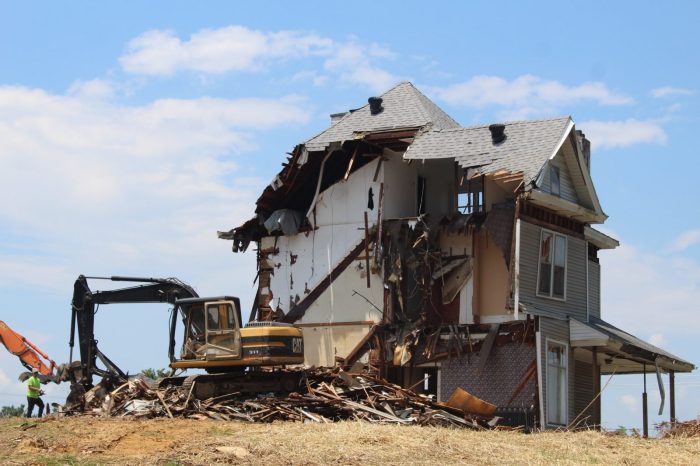
In conclusion, understanding the nuances of home demolition and rebuilding costs is crucial for a successful renovation project. By implementing the right strategies and considering all the variables, homeowners can navigate this process with confidence and financial prudence.
Q&A
What are some common factors that affect home demolition and rebuilding costs?
Factors such as property size, location, materials used, and labor costs can significantly impact the overall expenses.
How can homeowners estimate the costs of demolition and rebuilding?
Contractors typically calculate costs based on square footage, permits, disposal fees, and other variables. Obtaining multiple quotes and effective comparisons are key.
Are there any eco-friendly practices that can help lower costs?
Yes, implementing eco-friendly measures can not only reduce expenses in the long run but also contribute to sustainable living.

